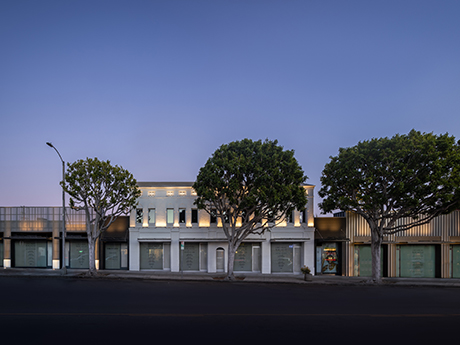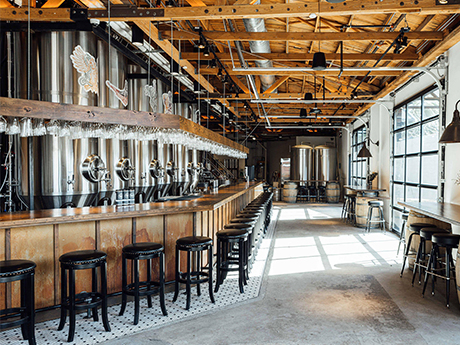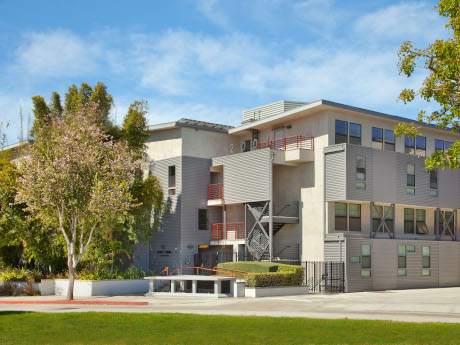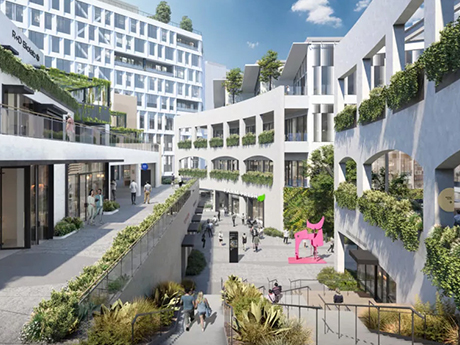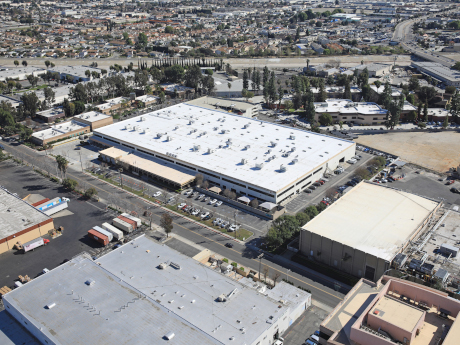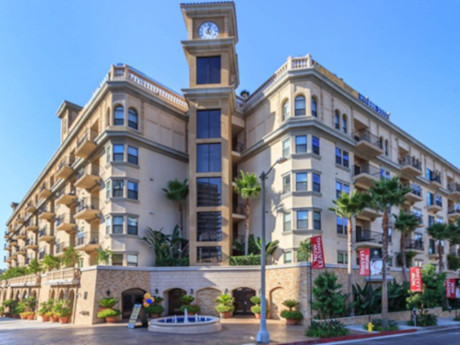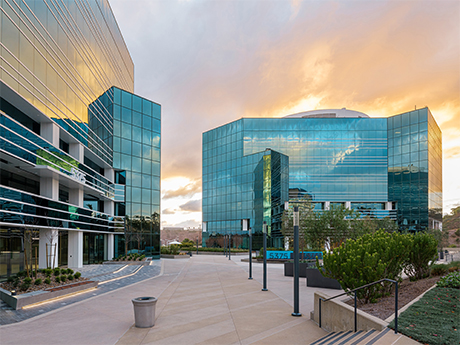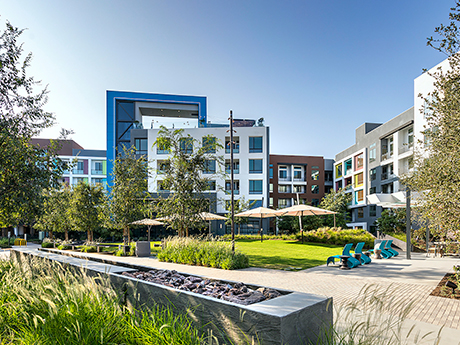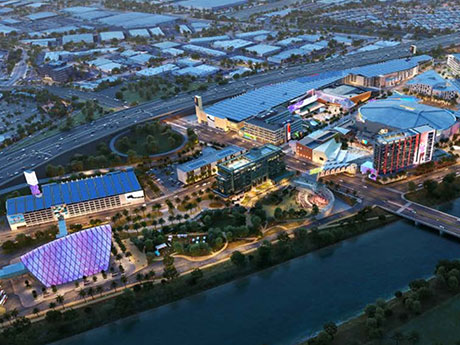One word comes to mind when you pair Los Angeles and real estate: expensive. But creating a premier space can attract top-notch tenants, which then brings in the nearby clientele that can afford to live, work and play in, well, LA. Of course, tourists are enthusiastic spenders as well. Price tags and calories don’t count when you’re on vacation, after all. Way Out West Malibu-based developer, manager and sponsor Christina knows all about what it takes to cultivate a dynamic retail offering in Los Angeles. In uber-developed areas like this, it typically takes a tired or underachieving retail space in a prime location that can be made into something grand. “Christina operates with a laser focus on investing only in the ultra-prime submarkets of Los Angeles: Beverly Hills, Brentwood, Century City, Malibu, Santa Monica, Westwood, West Hollywood and Venice/Silicon Beach,” says Lawrence “Larry” Taylor, founder and CEO of Christina. “Redevelopment opportunities in these submarkets, which have limited inventory of pedestrian-oriented retail streets, are rarely available.” Given their scarce availability, the 46-year-old firm’s strategy has been to establish and maintain relationships with property owners in these markets. “Then, when disposition opportunities present themselves due to life changes, estate planning or similar reasons, …
Market Reports
— By Evan Jurgensen, Senior Vice President, Lee & Associates Los Angeles – Downtown — As the pandemic recedes, the hospitality and food and beverage industries in downtown Los Angeles are rebounding, driven in part by the return of venue entertainment and conferences. The number of visitors to the area has climbed back to within 10 percent of pre-pandemic levels and now sits at 10 million people per month. Consequently, there has been an influx of new restaurants, venues and breweries in the region. However, as overall occupancy levels in the market remain in flux, businesses are becoming mindful of how they utilize their spaces to achieve a triple bottom line impact that benefits not only the asset owner, but also the consumer and community at large for the long run. Increased Investment in Outdoor Space Outdoor dining saved many restaurants during the pandemic and continues to have great appeal in the present day. In addition to being a healthier option for diners, outdoor seating allows restaurants to handle more customers at once and increase profitability. Los Angeles city officials created a streamlined process known as the L.A. Al Fresco program in May 2020, which allowed more than 2,500 restaurants and …
— By Kimberly Stepp, Principal, Stepp Commercial Group — Los Angeles’ Westside apartment market is poised to see a robust pipeline of transactions in 2023. Long-time owners have been increasingly seeking to trade into out-of-state assets, while 1031 investors or those looking to pay all cash seek to take advantage of opportunities in a high interest rate environment. Last year, Stepp Commercial Group saw a significant number of transactions with LA-area sellers who were frustrated with rent control and other problematic apartment legislation. They were looking to trade into states like Arizona, Florida and Texas because they provide a stronger ROI over the long-term and offer fewer landlord restrictions. We see that trend continuing into 2023 as owners want to enjoy a passive income as they achieve their individual investment goals and objectives. Additionally, while Measure ULA (“the mansion tax”) went into effect on April 1 — and impacts only homes and apartment complexes sold within the City of Los Angeles at $5 million or more — the overall sentiment has been sour from owners throughout the Greater LA area. They are justifiably concerned that similar legislation will soon be coming to their city, on top of other landlord-unfriendly restrictions …
The pandemic has done a lot to the office sector, not the least of which is convince employees they don’t need to sit in a cubicle eight hours a day, five days a week. Turns out, unsurprisingly, many people appreciate the freedom and flexibility that comes with working from home. The average U.S. office vacancy rate was 18.6 percent in the first quarter of 2023, according to Cushman & Wakefield. This was 5.9 percentage points higher than fourth-quarter 2019. Three California regions are also listed on the “Bottom 10 Performers of 2022” list (according to vacancy rate) put out by the National Association of Realtors. These include San Rafael (19.3 percent vacancy), San Francisco (16.4 percent) and Los Angeles (14.4 percent). Yet, leases are still getting signed, particularly at urban mixed-use projects throughout the state. Sean Slater, senior principal in RDC’s San Diego office, thinks this type of environment is a no-brainer for companies looking to bring employees back to the office. “Office workers want choice, especially with the current work-from-anywhere trend,” he says. “For a long time, suburban office parks have lacked choice of food and beverage, a diverse population of tenants, and a meaningful connection to their community. …
— By Tony Solomon, Senior Vice President, District Manager, Marcus & Millichap — Industrial continues to be one of the most sought-after asset classes across the Los Angeles County commercial real estate market. This year, the metro will maintain its position as one of the tightest industrial markets in the nation. It also ranks fifth in rent growth among major markets west of the Mississippi. For the 17th time in the past 18 years, the Los Angeles metro’s industrial stock will increase by less than 1 percent, as 4.3 million square feet is slated for delivery. Supply additions will be concentrated in the South Bay and San Gabriel Valley, leaving less than 1 million square feet to come online in the rest of the county. While vacancy was below 2 percent in four of the metro’s biggest submarkets to start 2023, speculative completions and industrial users re-evaluating their space requirements will push vacancy to 3 percent by year end. This is a rate 80 basis points under the long-term mean. Rents are projected to grow by 7.6 percent as a result, bringing the average asking rate to $21 per square foot. Part of this rise in vacancy can also be …
— By Priscilla Nee, Executive Vice President, CBRE — The Los Angeles apartment market started showing signs of cooling as supply has risen to meet demand. Rents decreased marginally year over year as last year’s apartment demand decreased following pent-up pandemic demand. In response to decreased prices, renter demand for space has seen an increase in the first few months of 2023. Across the market, vacancy is sitting just below 4.5 percent as of first-quarter 2023, which is up from all-time lows of around 3.7 percent one year prior. Concessions for new renters are present. They have been steady and increasing since the third quarter of 2022 as landlords work to attract great renters to new and existing projects. Additional new supply is outpacing present demand, despite early upticks in demand for the year. That, paired with a strong development pipeline and an additional 27,000 units under construction, may continue to drive vacancy rates up should demand not increase in kind. This could lead to potential reductions in lease rates if a property sits vacant on the market long enough. Most current development and construction is centered in Downtown LA, Koreatown and South LA. Markets like Inglewood are setting themselves …
— By Sean Fulp, Vice Chair & Head of Office Capital Markets, U.S. Southwest, Colliers — Office sales, leasing and development activity are at historic lows for Los Angeles County. With interest rates rapidly increasing, few active developments, and office vacancy and availability at an all-time high, the office market is in discovery mode. One of the major trends in development is creative, state-of-the-art studio/office campuses. These developments have broken ground in West Hollywood, Burbank, Santa Monica and Culver City. Developers in this space have the mindset of “if you build it, they will come.” Office sales activity is down more than 50 percent in the past year due to a high interest rate environment and a divide between buyer and seller pricing expectations. As loans become due, landlords will have decisions to make, and distress will occur in the market. Office availability is at an all-time high in Los Angeles at nearly 30 percent — likely the new norm going forward. Companies have figured out that employees like to have the flexibility of where and even when they work. With that said, companies are downsizing their office space by 25 percent to 50 percent and, in some cases, by …
— By Tim Helgeson, Senior Vice President, Asset Manager, KBS — With San Diego’s median age sitting at just 34.9 and only 12 percent of the population over 64, much of the area’s workforce comprises younger Millennials and Gen Z professionals. This new generation of workers has a fresh approach to employment, not to mention a unique shared history that’s shaped by COVID. As this younger cohort enters and establishes itself in the workforce, employers expect their office space to help them attract and retain young talent. This expectation is influencing investors’ decisions and, in many ways, reshaping the office market in the new normal. These younger workers will be impacting office market dynamics now and for the next several years in a few different ways: Accelerated Repopulation of Offices Many employees got used to working remotely during the pandemic, but there is ample evidence that companies recognize the importance of having their teams in the office. Younger workers are partially driving this trend. In fact, research shows that Gen Z values the office more now than they did before the pandemic. The truth is, no remote work situation can compare to face-to-face, on-site interactions for onboarding, teaching, mentoring and advancing …
— By Cameron Irons, Executive Director, SVN Vanguard — The multifamily real estate market in Orange County continues to be one of the most attractive and profitable in the country. The area’s strong economy, affluent population and abundance of job opportunities have made it a popular destination for people looking for a place to live. As a result, the demand for housing in Orange County has remained high. Developers are responding by building new multifamily and mixed-use developments. There are several highly active companies developing new multifamily projects in Orange County. Projects such as Metropolis by the Irvine Company and Park and Paseo by Broadstone are nestled among large office/industrial parks and feature thousands of residential units, in addition to retail and commercial space. They are designed to be hubs for work, play and living, offering residents a wide range of amenities. Lennar Homes, KB Homes and Meritage Homes have similar projects in development in every city throughout the county. Despite the high prices of these properties, the Orange County multifamily market continues to thrive. The area has seen a surge in the number of renters in recent years, which has put pressure on the available housing supply. This has driven …
Orange County’s Retail Vacancy is Tight, but Capital Markets Activity Will Be Sluggish this Year
by Jeff Shaw
— By Terrison Quinn, Managing Principal, SRS Real Estate Partners — The Orange County retail property market was very active last year for both leasing and capital markets. At 4 percent, Orange County’s retail vacancy was back down to pre-pandemic levels. There was an annual net positive absorption of 445,000 square feet with 191,000 square feet of new space delivered in 2022, per CoStar. Average rents increased 5 percent from an average market rent of $34.84 per square foot, per year to $36.58 — the highest rate of rent growth in 10 years. We don’t see rents coming down at all this year, especially as there’s only 170,000 square feet of new space currently under construction and we continue to experience favorable consumer demand. From a capital markets perspective, investment activity remains to be seen. In line with national trends, many investors and lenders are putting capital deployment on pause as they analyze economic activity and adjust to a period of higher interest rates, higher inflation and, perhaps surprisingly, strong employment. Despite the angst that comes from uncertainty, there is a lot of positive sentiment toward economic corrections, creating investment opportunities over the coming years. This is certainly the …


